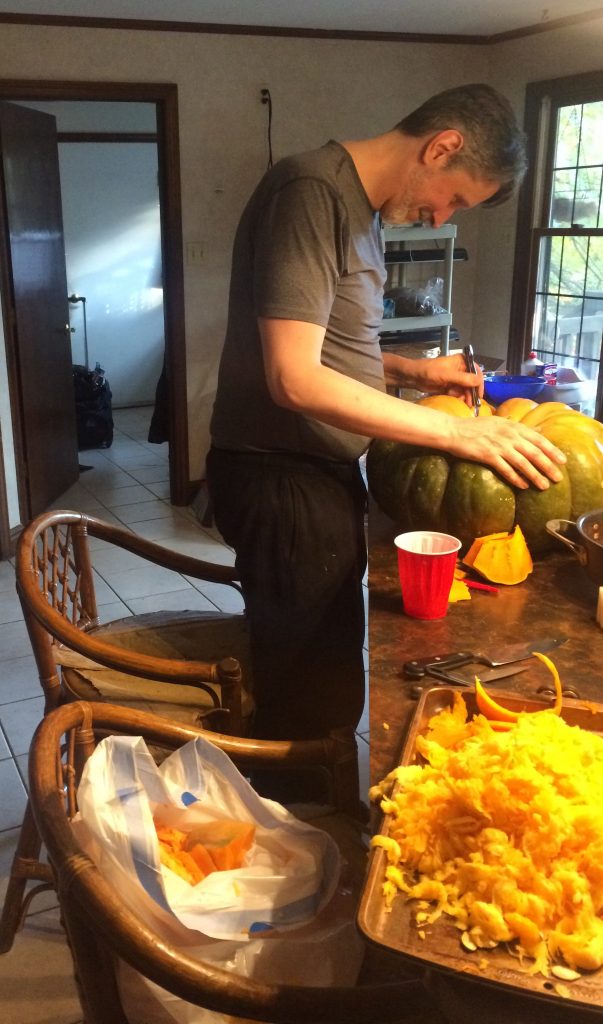I’ve written before about how the public school system doesn’t teach the right things. But there’s a bigger problem underlying the whole rotten mess of concrete and bureaucracy that is the modern public school system. There’s one single assumption that underlies the whole thing, and that one assumption is untrue.
That false assumption? “People don’t naturally want to learn.”
If you believe people don’t naturally want to learn, then what about babies and toddlers? Nobody formally teaches little kids to sit and crawl and walk and talk, but everybody knows that all little children learn these things. It’s really obvious that little children are wired to learn and to learn voraciously. Just look at any two-year-old who annoys the grownups by asking so many questions.
So if the concept of “people don’t want to learn” doesn’t happen until later, when exactly does it happen? If you look at kids, it seems to happen right around school age. Children who a year ago would be annoying with their extreme curiosity mellow out, then proceed to sink further into “I hate learning”.
Still, the same exact children who don’t want to learn in school continue to learn voraciously about things that interest them. It may be things adults don’t approve of, like cartoon characters, or video game stats, or how to bypass the screen time lockouts on their phones. But this is still learning, and it’s still curiosity. It’s learning in absence of being forced to learn, which is why it continues to be fun. So evidently, people can and do learn things that they’re motivated to learn and interested in learning, at all ages.
“But people don’t learn the things they need to learn!” you may exclaim. Let me ask you, what exactly is it that we teach in school that people need to learn? And how do we know that they’re not going to learn those things naturally, outside of school?
What do people need to learn? Reading. Writing. Basic arithmetic. How to exist as an adult. But everyone learns these things of necessity; you can’t function in the world without them. You don’t need school to teach that. And after they have the minimum knowledge they need to function in the world, individuals follow their specific interests to logical conclusions.
Still, what about all those other things that we teach in schools? Spanish, differential equations, mitochondria, whatever? What about how to get into college?
Interestingly, there is a strong and growing subculture of people who raise their kids with no enforced education. And the research shows that these kids can get into college and have successful careers at rates equal to or even greater than that of the publicly or privately schooled population. (Sources: Smithsonian, KQED)
So if just letting kids do what they want is so great, why do we all think instinctively that it shouldn’t work?
John Holt wrote this in his book How Children Learn. “All I am saying in this book can be summed up in two words—Trust Children. Nothing could be more simple—or more difficult. Difficult, because to trust children we must trust ourselves—and most of us were taught as children that we could not be trusted. […] What we have to do is break this long downward cycle of fear and distrust, and trust children as we ourselves were not trusted.”
We don’t think unschooling should work even though it does because the societal wisdom about children, which we all have somewhere in our brains, is wrong. We were taught not to trust how children naturally learn. But we were taught by the very system that profits off not allowing children to learn naturally; we were taught propaganda.
If you don’t need to force people to learn, then, is there no place for teachers, classes, students?
No. There is still a place for that. Just look at all the non-mandatory classes that people take over their lives. People take classes in music and art and tech and science and history and every other thing. Classes can be a very effective way to learn… if the people in them want to learn.
When I was getting started as an artist, I experimented with a number of media through taking classes. When I signed up for them, they were explicitly “for adults”. Not because they had any risqué content, just because they didn’t have anybody to be the schoolteacher, the authority figure. They were meant for adults because they trusted adults. They didn’t trust children.
With some combination of my mom’s persuasive skills and my dashing charm (just kidding, I was like twelve; it was 100% my mom’s persuasive skills) I got into these classes “for adults”. One of them was a wildlife drawing class.
It was a ton of fun and a great experience. I’d been out of school for a while at that point, so I didn’t think it was strange that the teacher just walked around giving advice and making critiques, telling us to help ourselves to complimentary cookies and soda while we drew. I made a few friends in that class, most of whom were many times my age.
A few years later, I took a ceramics class. This one was explicitly “for teenagers”; I think the age range was 15-18 or 13-18 or something like that. The kind of thing that’s meant as an extracurricular for high schoolers.
It was a weird experience. Besides the complete lack of age diversity, there were a ton of really weird rules and expectations. No more than one person was allowed to leave the studio at one time to use the bathroom. I wasn’t particularly annoyed since it didn’t inconvenience me, I was just baffled. It was so unnecessary.
Not only was the class setup weird, but the teacher was also weird. They (I don’t remember their gender) were really distant and not friendly at all, and they seemed to expect this kind of deference. You know those pompous customers you get working retail, where they just expect you to hand them the universe on a silver platter? This teacher acted a bit like that.
I talked to my mom about it on the ride home, and she informed me that it wasn’t that the class or the teacher was weird. It was because it was a class for teenagers.
With classes for adults, you can be sure that 100% of the people there are there because they want to be. Nobody forces an adult to take an art class. If the student has learned what they wanted to learn, the objective of the class has been achieved. But with classes for teenagers, it’s a completely different story. The teacher can’t be sure that the student wants to be there, or wants to learn. Further, they don’t have to answer to the student; the real master for a teacher of teens is those teens’ parents. The teacher tries their best to make the class interesting and fun, but they have to control what the kids do so that the parents are pleased, and generally act like a schoolteacher, which severely limits their ability to do that.
There is still a place for classes and teachers. These are valuable things. But the public school environment, where the students don’t want to learn and the teachers don’t want to teach and literally nobody wants to be there at all, that is not useful.
So where do we go from here? How does the establishment change?
I propose using the funds that are currently being funneled into the public school system and use it to fund optional classes, held at public libraries. After the “school subjects” are made optional, we can decide to make things mandatory which are important for everyone to know regardless of their interests; things which are necessary for functioning in modern society. Teaching basic technology, psychology, and economics would be a good start: after all, there’s an awful lot of people, tech, and money in the world right now. It also makes significant sense to teach people stuff like basic self-care and first aid, what laws there are, how to pay taxes, how to get insurance, etc etc. These mandatory things, then, can fill the psychological void left by the public school system (appeasing all the grownups who love telling kids what to do), as well as filling the physical void of the empty school buildings.
What do you think? If you’ve got ideas for how the system could be changed, or reasons why it shouldn’t be, stick them in the comments. I’d love to hear from you.





